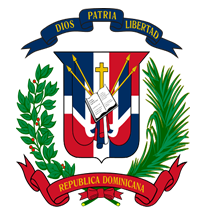Dominican Republic: Government
Key Figures
- Chief of State:
- President Luis Rodolfo Abinader Corona
- Head of Government:
- President Luis Rodolfo Abinader Corona
Overview
- Government Name:
- Dominican Republic
- Constitution:
- Adopted: 2010; Separates powers into three branches. Since the country's independence in 1844, they have had 38 constitutions which is more than any country. The constitution also establishes the system of governance as a unitary, democratic republic.
- Government Type:
- Democratic Republic

Index of Economic Freedom
Country Risk Rating
Government Branches
| Main Powers | Election Process | Election Cycle 1 | |
|---|---|---|---|
| Executive | The president is both the head of state and the head of government, and also executes laws passed by the congress, appoints the cabinet, and is the commander in chief of the armed forces. |
The president is elected by absolute majority vote through a two-round system. |
Eligible for two consecutive 4 year terms |
| Judicial | The supreme court has the judicial authority, and the court alone hears actions against the president, designated members of his cabinet, and members of congress. |
The supreme court and constitutional court judges are appointed by the national council of the judiciary. |
Supreme Court Judges: 7 year terms; Constitutional Court Judges: 9 year terms |
| Legislative | The national congress is bicameral and is composed of a senate and the chamber of deputies. |
The senate has 32 members elected by plurality vote in single member constituencies. The chamber of deputies has 178 members elected through an open-list proportional representation system. |
4 years |
Regional Trade Blocs
No Regional Trade BlocsInternational Organization Participation [2]
Environmental Agreements [3]
Tax Information [2]
- Tax Authority:
- Dirección General de Impuestos Internos
- Tax Name:
- Tax on the Transfer of Industrialized Goods and Services
Sources:
- ElectionGuide http://www.electionguide.org/
- EY, http://www.ey.com
- CIA World Factbook, https://www.cia.gov/the-world-factbook/
- U.S. Bilateral Relations Fact Sheets http://www.state.gov/r/pa/ei/bgn/


